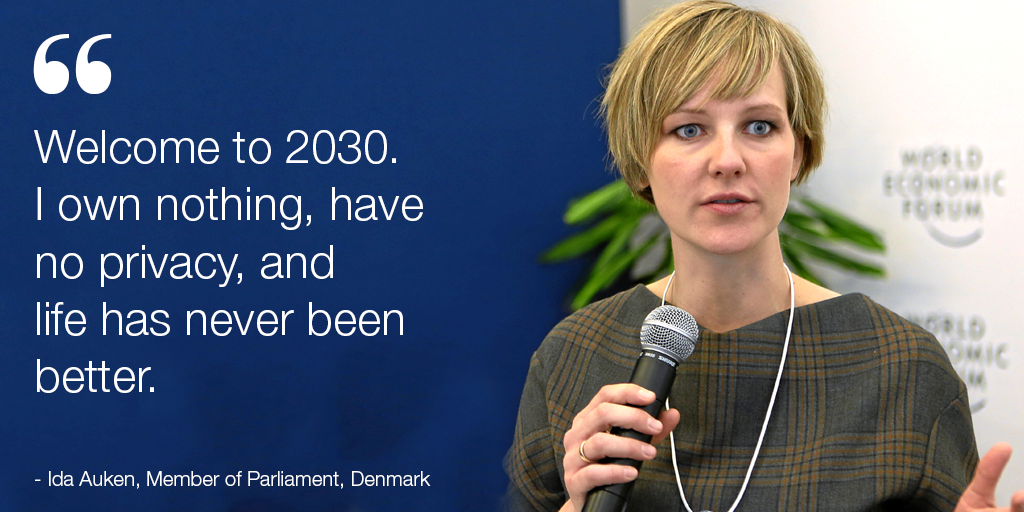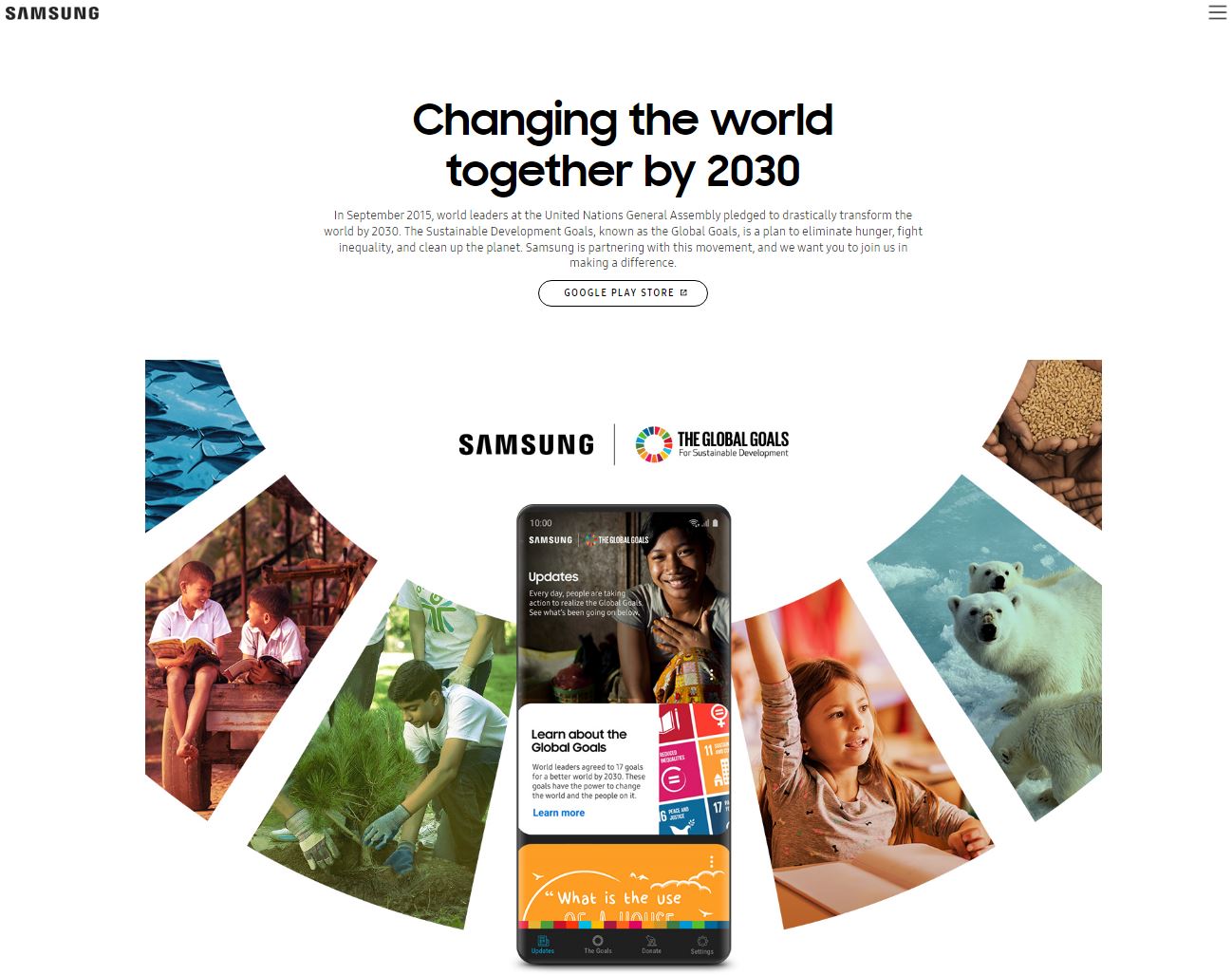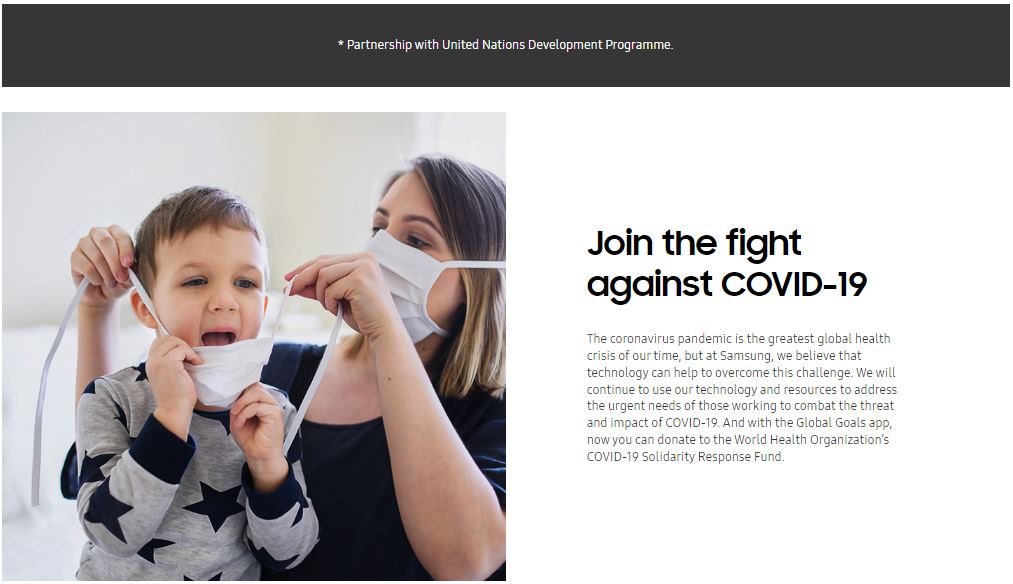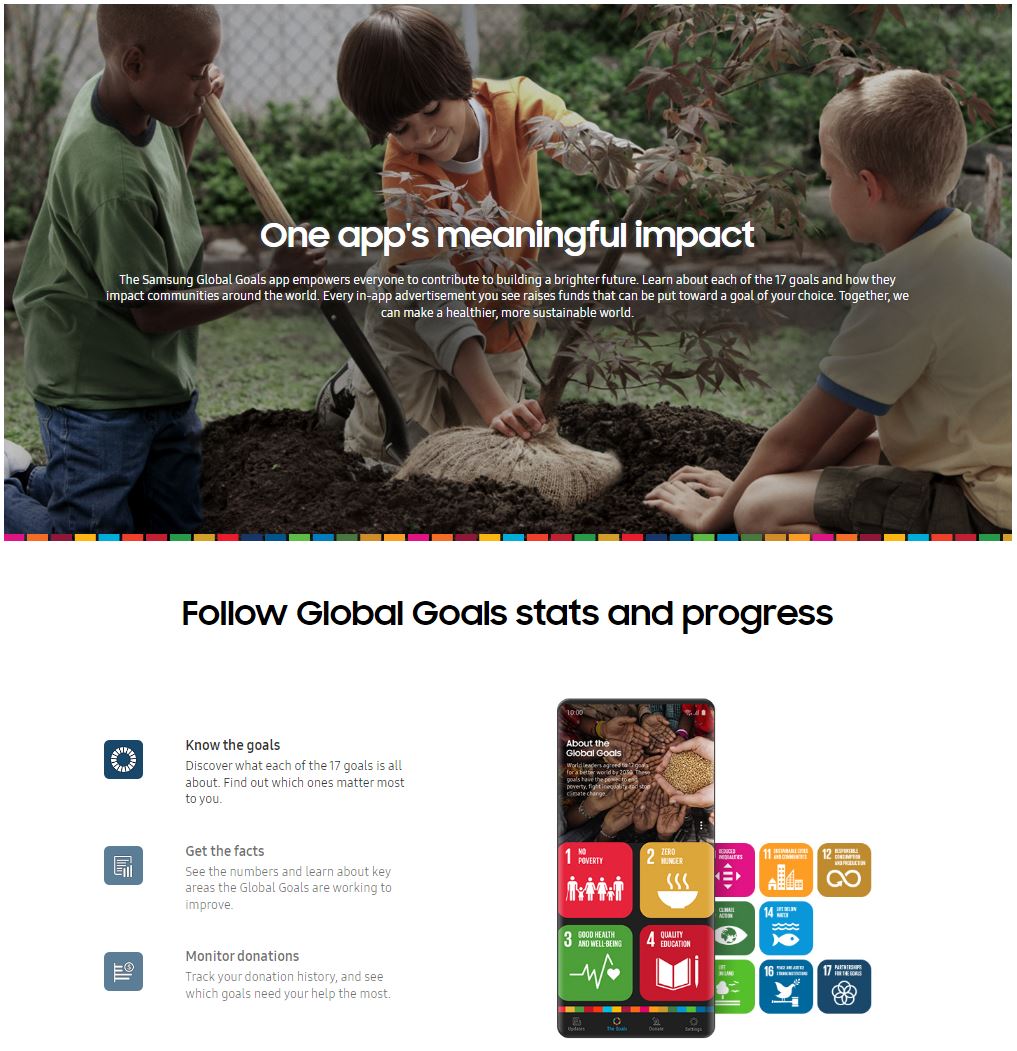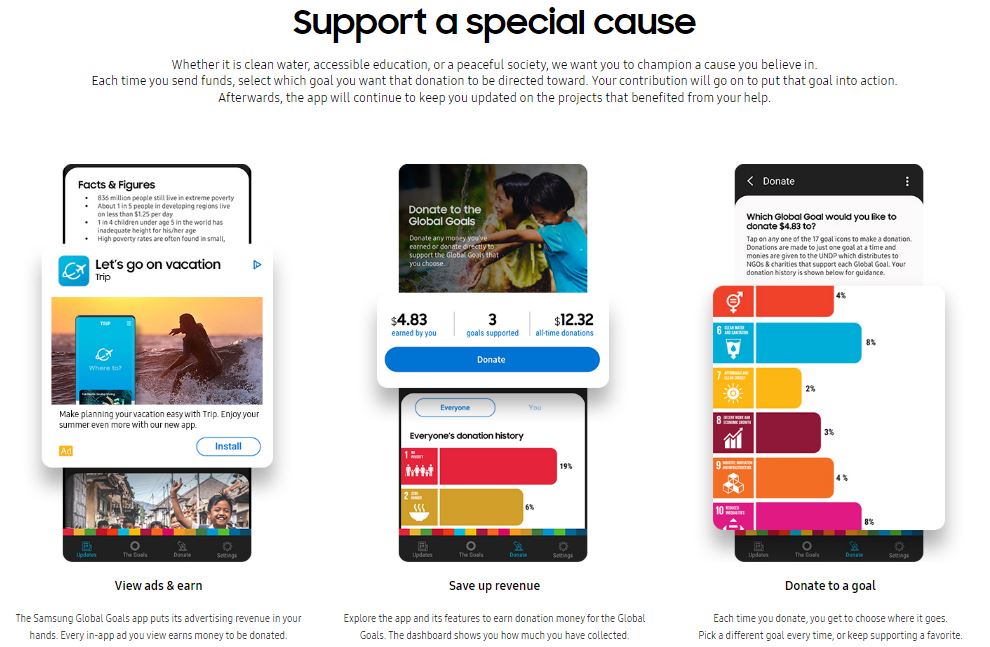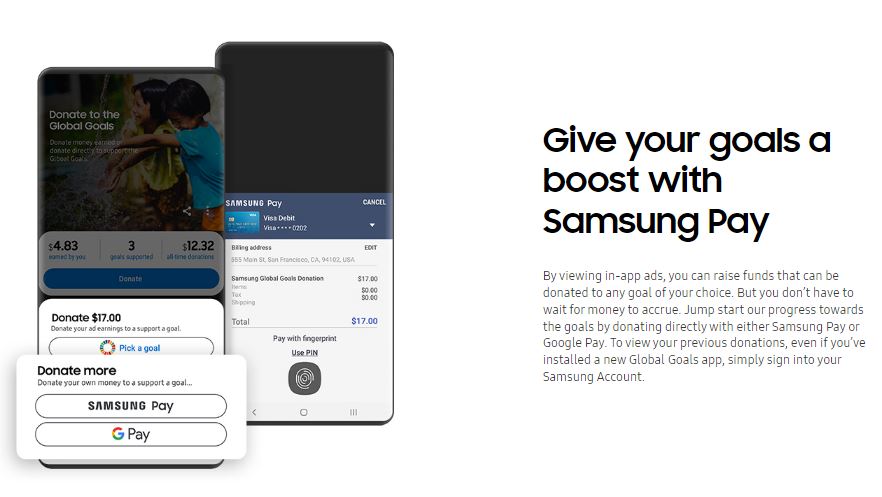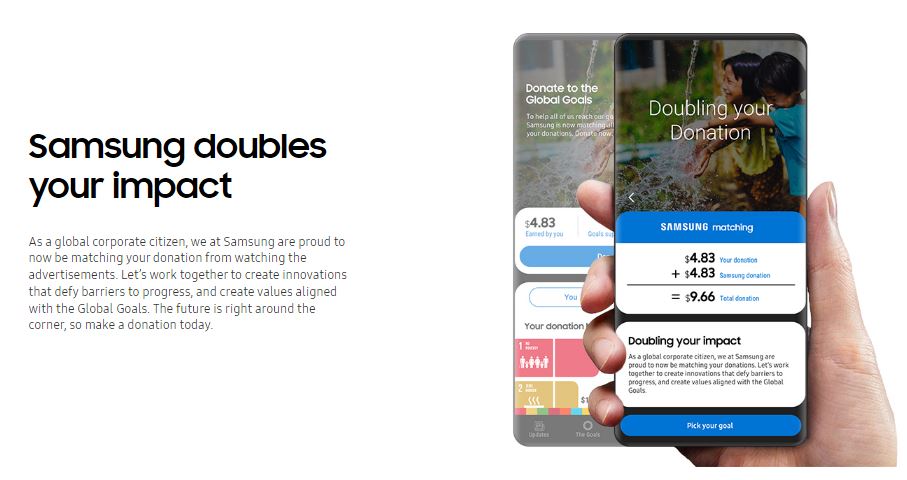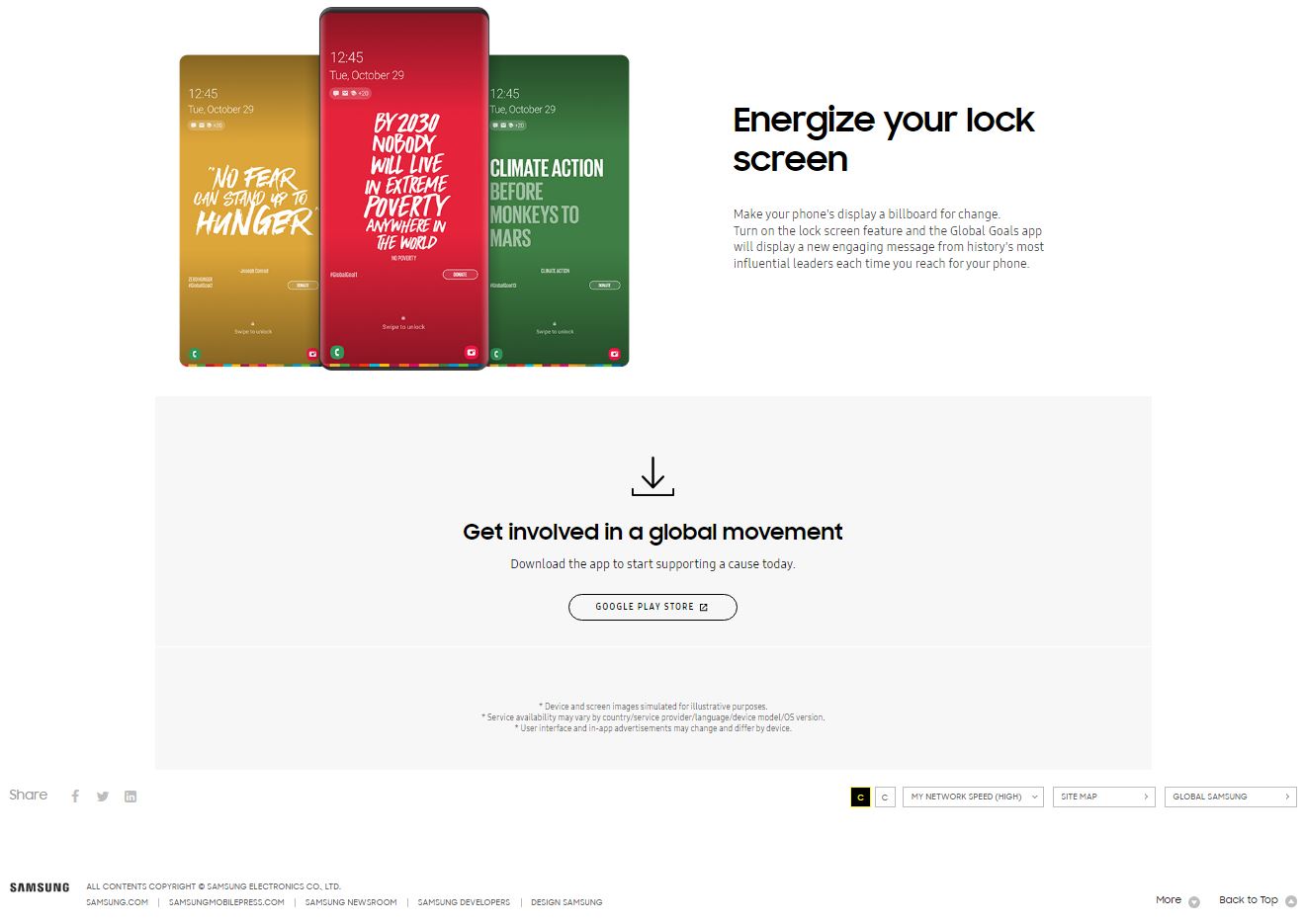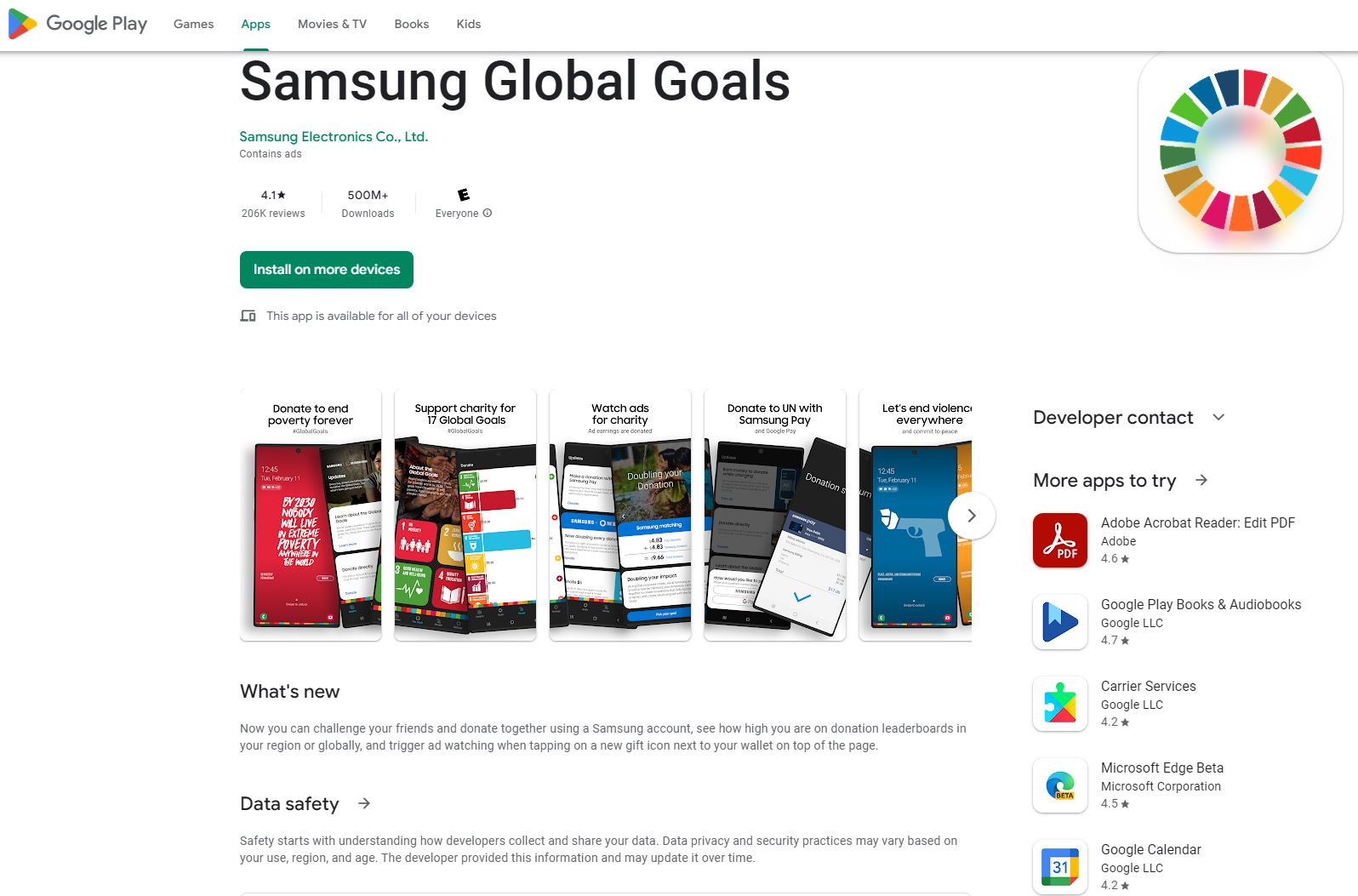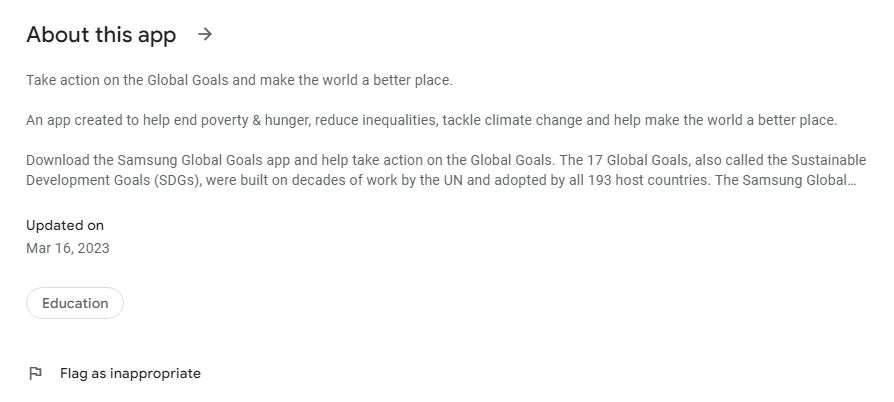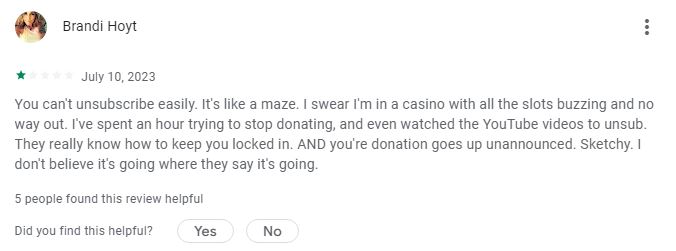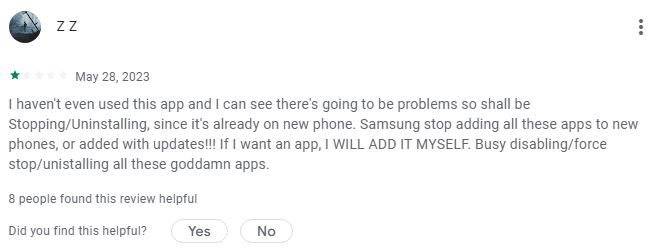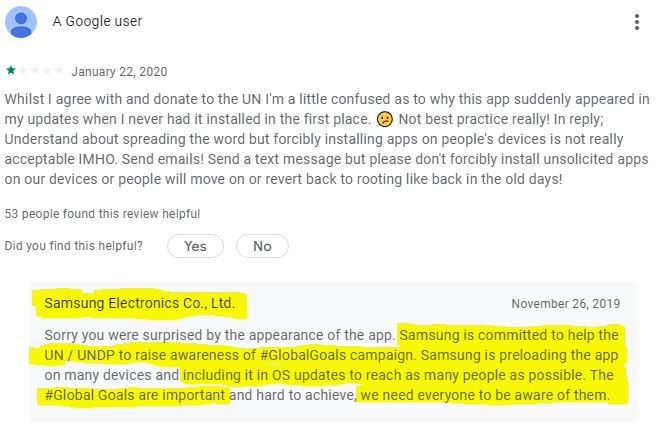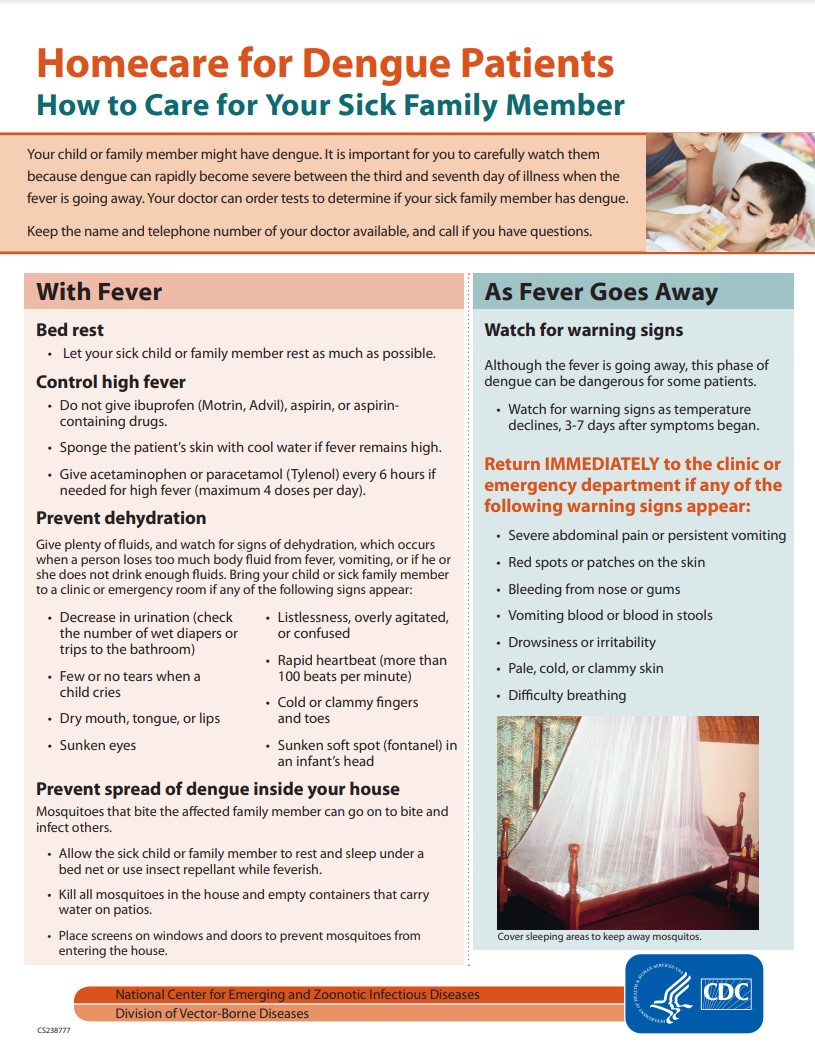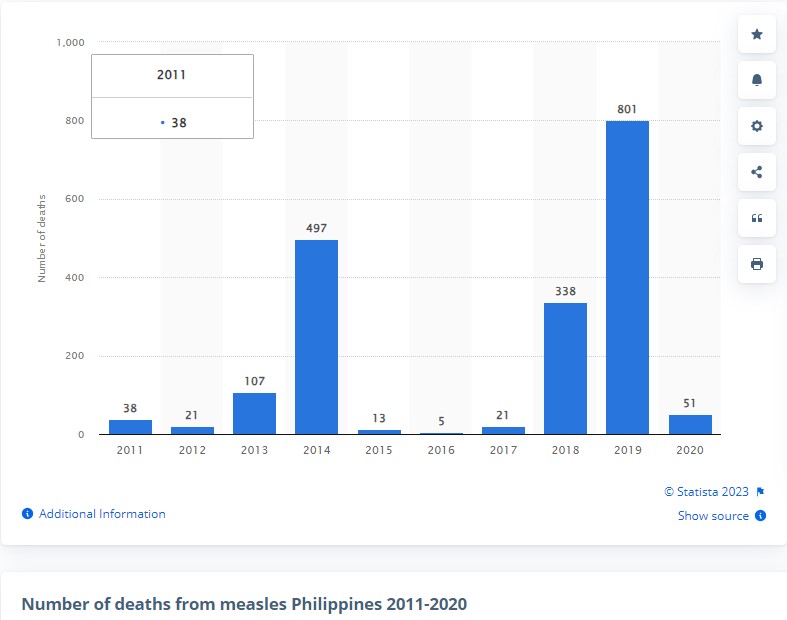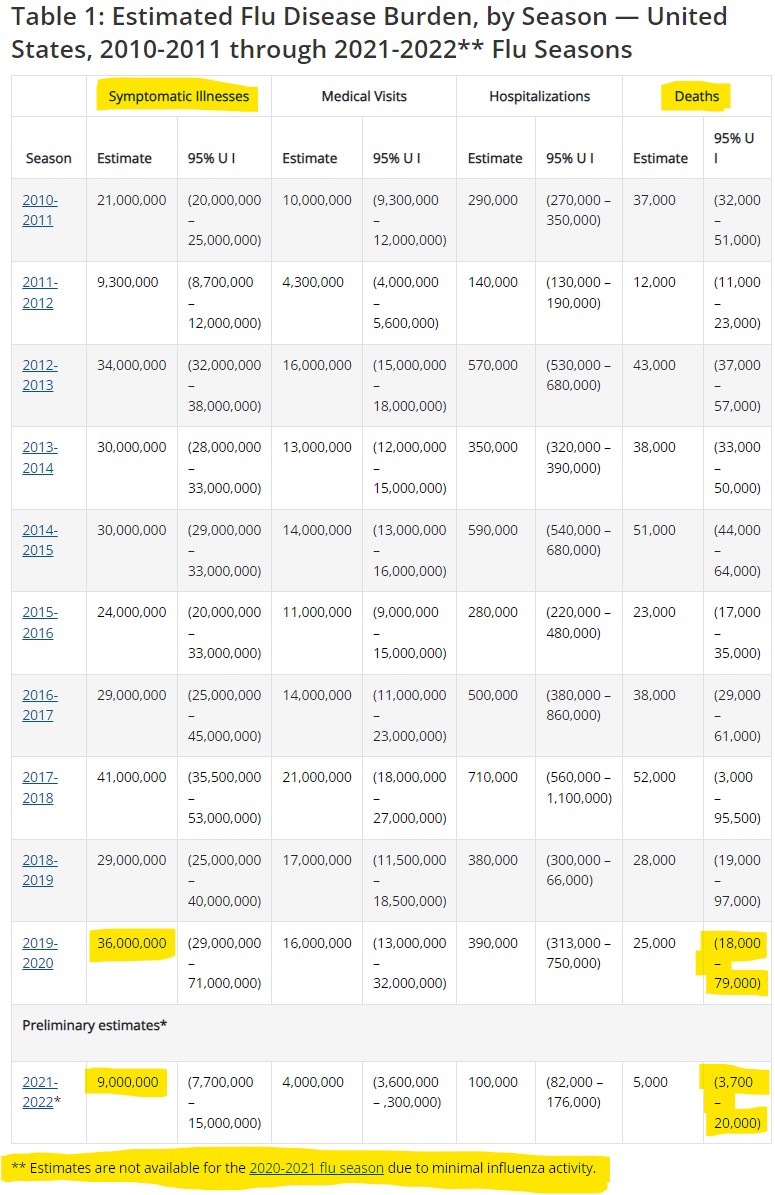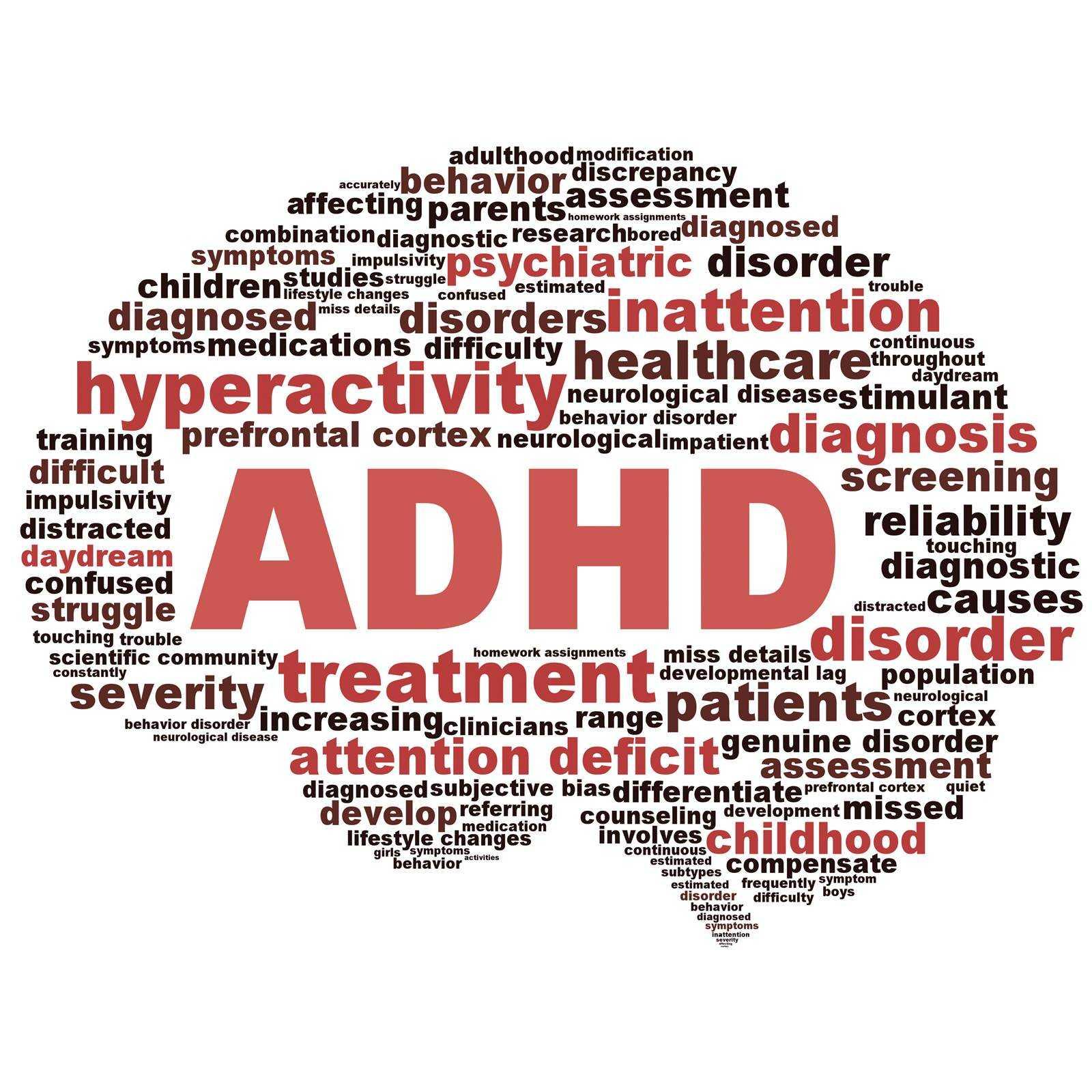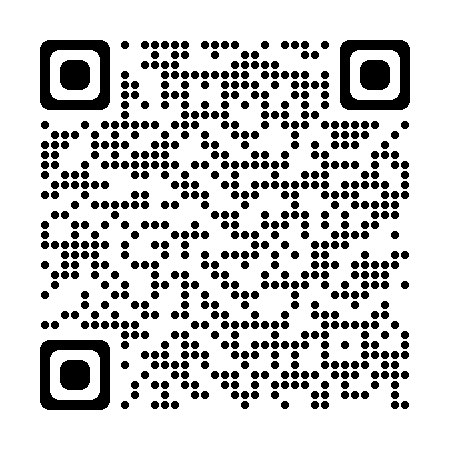Agenda 2030 - Samsung Teams Up With The United Nations to Raise Awareness?
Many people were under the impression that UN Agenda 2030 directive was a "conspiracy theory." It is most definitely not.
Here are screen shots for the associated Samsung Global Goals website. I did this to document what was on the website as of this date. I don't know if these sorts of apps will become more invasive in the future or not.
Keep in mind, EULAs (End User License Agreements) are not getting any shorter. Also keep in mind that Microsoft owns your copy of MS Windows. Not you, you paid for it, but you didn't "buy" it, you paid for the rights to use it. Any Windows machine is basically like a cable TV box. Microsoft can update and change your computer when they want, and you don't have any say in what they do.
United Nations, Agenda 2030, and Samsung
The app is designed to allow users to watch adds, then the add revenue is stored in the user's donation account. It is later donated to the UN or whatever associated "charity," sometimes automatically.
-
-
-
-
-
-
Here's the info from the Google Play Store about the Samsung Global Goals app.
-
The reviews are rather interesting. There are many of people who like the app, but, few who really know what Agenda 2030 is about. This first person does.
-
-
-
-
-
-
Some people don't like the app.
-
-
-
-
-
Samsung replies with something like, "Agenda 2030, SDGs, and UN directives are important -- because 'we' say they are. Therefore, you will do what we say, and like it. Oh and raising awareness and stuff..." People might want to read those EULAs a little more closely.
-
I'll admit, I have Samsung devices. While I've never run into this application on my devices, I'm going to be looking to other manufacturers from now on when purchasing phones.
What do you think?
Please leave a comment, like it or hate it... You DO NOT need to register to leave a comment. Email addresses are NOT used. Just make one up "someone@somehost.com"
What's New? Dengue Fever -- That's What's New!
Setting The Stage
It’s now being widely reported that Dengue Fever might become the next global pandemic. Does this really make sense? Why are more people getting it now, than just a few years ago?
Lima is dealing with an outbreak of dengue.
Rosa Gutiérrez, who was forced to resign as health minister on June 16, was widely viewed, both by medical experts and ordinary Peruvians, as out of her depth in handling the outbreak.
//
"But it's not just the health ministry," says Soto. "It's also the education ministry, the housing ministry, infrastructure and regional governments," which are failing. One of the many problems he criticized was the lack of potable water and sanitation services at schools, with pupils often forced to wash their hands in plastic tubs and flush toilets with buckets of water, making the schools dengue hot spots and forcing the Piura regional government to close them for several weeks.
It would seem to me that there are much larger problems in Lima. Lack of sanitation is the absolute number one cause of illness anywhere. Vaccines are not the answer to a place with not running water, improving infrastructure is the start. There is data going back 100+ years that illustrates an increase in public sanitation services, with a dramatic decrease in illness -- far more effective than any vaccine. But that's a topic for another day.
According to some people, this increase might be climate related.
"Dengue is occurring in urban areas where it did not exist before," Dr. Coralith García, associate professor at the school of medicine at Cayetano Heredia University in Lima, Peru, told Fox News Digital.
Experts blame warmer temperatures and increased rainfall, but even in Lima, the second largest desert city in the world, dengue is flourishing because "it’s so crowded that anything can happen," she added.
The "experts" blame high temperatures and increased humidity/rainfall for the rise in cases (dengue is spread by mosquitoes) however, cases are simultaneously increasing in places with hot dry climates?
This is explained away by saying, "it’s so crowded [in Lima] that anything can happen." Really? When was the last malaria outbreak in Lima? Watch out for those pesky -- Desert Mosquitoes. And, Lima didn't become densely populated within the last year, Lima has been densely populated for decades, so why are we seeing this now? You can't have it both ways, but when you're making up stuff, you need it both ways.
I'm not blasting Dr. Coralith García, associate professor at the school of medicine at Cayetano Heredia University in Lima, Peru, but this is not "science." "Anything can happen" is not science, that's a literal admission that they have no answer for what's going on.
How Dangerous is Dengue Fever
Dengue fever is unique in that it requires an ADE (Autoimmune Deficiency Enhancement) response, in part, to make people sick. Most people who are exposed to and catch dengue fever have no symptoms the first time around, however; when they are exposed the second time, they are much more likely to get sick. This is why the vaccine (Dengvaxia) is only supposed to be given to people who have had dengue fever in the past. More on this later.
CDC stats for the Flu -- deaths US only.
CDC estimates that flu has resulted in 9 million – 41 million illnesses, 140,000 – 710,000 hospitalizations and 12,000 – 52,000 deaths annually between 2010 and 2020.
Now let's look at dengue fever -- deaths GLOBALLY.
Each year, up to 400 million people are infected by a dengue virus. Approximately 100 million people get sick from infection, and 40,000 die from severe dengue.
Somehow since COVID-19, and a global mass vaccination campaign, a blood-borne illness spread by mosquitoes has become more virulent -- in the desert?
CDC guidance on at home care for dengue fever.
Jump to The Philippines
There is a vaccine for dengue fever, but it doesn't have the best track record. It's called Dengvaxia, the same one that the CDC recommends if you want to be vaccinated for dengue fever.
A vaccination program run by the Philippine Department of Health (DOH) administered Sanofi Pasteur's Dengvaxia to schoolchildren.[3] The program was stopped when Sanofi Pasteur advised the government that the vaccine could put previously uninfected people at a somewhat higher risk of a severe case of dengue fever through antibody-dependent enhancement.[4] A political controversy erupted over whether the program was run with sufficient care and who should be held responsible for the alleged harm to the vaccinated children.
In late November 2017, the DOH suspended the school-based vaccination program.[5] The DOH subsequently banned the vaccine's use and sale in the Philippines.[6] The scare caused by the controversy has been suggested as a factor in the country's loss of confidence in vaccines and low immunization rates,[7] resulting in an infectious disease crisis in the country in 2019,[8] including a measles outbreak.[9]
The dengue fever vaccine (Dengvaxia) was only supposed to be given to people who were previously infected with dengue fever. There is an antibody test to determine whether or not someone has had dengue fever in the past. As I stated earlier dengue fever works in part by ADE. ADE is basically where you are exposed to something, and your body "gets used to it," no longer attacking that particular pathogen when it enters the body. You get exposed to dengue fever, your body builds an ADE response to it, then when you are infected a second time, you could get very sick, because your immune system ignores the pathogen.
The Wikipedia article states that there was an increase in vaccine hesitancy because of the Philippine government's complete mishandling of the Dengvaxia rollout. But then, the article goes on to claim that there was an infectious disease outbreak due to vaccine hesitancy citing measles as the most prevalent.
In 2019 (the year of the measles outbreak) there was an increase of (463) measles deaths when compared to 2018. For 2014, for which there was no measles outbreak, there was an increase of (390) measles deaths when compared to 2013. The difference between the two increases being (73) deaths. However, in 2020, there were only 51 deaths attributed to measles? Was the measles vaccine uptake higher in 2020 when compared to 2019?
Wikipedia shows that the number of deaths due to the 2019 Philippines Measles Outbreak was (415). I don't know which source is more accurate. Keep in mind the population of the Philippines is 109,033,245.
Due to fear of being exposed to people with Covid-19, Vergeire explained that many parents were reluctant to leave their homes and have their children vaccinated.
Moreover, healthcare workers on the ground were unavailable for the vaccination program because they were re-deployed to attend to [COVID-19] vaccination duties.
"The Philippines is one of the few countries that continued with its efforts for supplemental immunization campaigns in the middle of pandemic. The Sabayang Patak Kontra Polio is a continuation of the 2019 polio campaign in response to the polio outbreak in the country," Vergeire said.
She added that in July 2020, the agency has vaccinated more than 2 million children less than five years old in Central Luzon, Cavite, Laguna, and Rizal.
Meanwhile, the first phase of the vaccination against measles-rubella was conducted October to November 2020 covering Luzon regions and the whole of Mindanao and the second phase was conducted during the first quarter of 2021 including the National Capital Region, Central Luzon, Calabarzon, and the Visayas.
Vergeire stressed the vaccines used in routine immunization have been backed up by decades of research and an established system of delivery and monitoring.
"Vaccines saved millions of children from the debilitating effects of VPDs like polio, measles, mumps, and a lot more," she said. (PNA)
Parents were scared to visit health care facilities, and health care workers were unavailable for routine vaccinations because they were busy with COVID-19 vaccinations. The uptake of all other vaccines, other than COVID-19 vaccines, decreased, yet the numbers indicate that there was no outbreak of any other infectious disease? The same people who were vaccine hesitant in 2019, would still be vaccine hesitant in 2020. Somehow there is a decrease in almost every other disease metric -- even with decreased routine vaccine uptake?
Back to Peru
At least some of the findings make sense for Peru.
We observed that since the first case of COVID‐19 was reported in Peru, there has been a decrease in the number of dengue cases reported in several endemic regions of Peru. This temporal pattern is consistent with findings in Brazil. 15 This could be due to the fact that the epidemiological alert triggered by an increase in the number of COVID‐19 cases in Peru has affected the epidemiological surveillance of dengue, resulting in an underreporting of dengue cases, as has also occurred in recent epidemics, where the excessive prioritization of the prevention and control of emerging diseases has led to the unintentional neglect of endemic diseases. 4 Dengue virus is transported mainly by infected travelers. 1 Therefore, social isolation, quarantine, and other preventive measures that were implemented in Peru to counteract the progression of COVID‐19 could have generated a real decrease in the incidence of dengue. 11 , 15 In contrast, difficulty in access to timely diagnosis together with the population's concern about the risk of being infected with COVID‐19 in healthcare facilities may be another reason for the decrease in the number of dengue cases reported at the beginning of the COVID‐19 pandemic. 16
Similarly, until July 2020, in the West Pacific region, countries such as China, Malaysia, Vietnam, and Australia registered fewer cases of dengue compared with that in the same period in 2019. 17 Moreover, in the Americas, data registered up to epidemiological week 21, 2020, show a reduction by approximately 10% compared with that in 2019. 18 Countries such as Bolivia, Honduras, Mexico, Paraguay, and Brazil reported a large increase in the number of dengue cases during the first weeks of 2020, 11 , 15 , 19 which abruptly decreased subsequently, coinciding with the exponential increase in the number of COVID 19 cases. 11 , 15
The findings of our study also demonstrate that the number of dengue cases per million inhabitants during the COVID‐19 pandemic has exceeded the number of cases reported in the years before the pandemic. This is in line with findings in other geographical areas such as Brazil, the Southwest Indian Ocean Islands, 16 and Asia. 20 Paradoxically, this could also be explained because of the prevention measures established to prevent COVID‐19 transmission because, during the quarantine, populations have lived in close contact with each other for a long time, which promotes the reproduction of arthropods/mosquitoes in and around the houses. 21
The logic is as follows; there was a decrease in the number of dengue cases reported in Peru. COVID-19 testing can be blamed for the decrease in documented dengue cases. Dengue virus is transported mainly by infected travelers (also requiring mosquitoes). Social isolation, quarantine, and other preventive measures that were implemented in Peru to counteract the progression of COVID‐19 could have generated a real decrease in the incidence of dengue, but not COVID-19?
This is a very long winded way of saying, dengue was underreported because COVID-19 was overreported. It can't be assumed that the majority of people worldwide -- were primarily sick with one illness.
The Disappearing Flu
Here's data from the CDC for Flu in the US. The Flu nearly disappeared during the 2020-2021 reporting period? The Flu is going to appear as if it surging as soon as there is one year of normal reported cases.
But that problem is two-fold. This could mean that the Flu vaccines aren't working? "The science" is in trouble here because there's not a good way to spin this. Of course, they could claim that the Flu vaccines prevent "severe illness and death," but that wouldn't account for the previous years where people were sick enough to go to the hospital anyway. Again, you can't have it both ways.
Those Pesky "Desert Mosquitoes"
There are many things at play here one of which is the scientific community trying to maintain their relevance. Vaccines have been touted for years to work miracles, and COVID-19 has come along and shown a light on a lot of the issues here. The most important is that bad statistical data leads to ill-informed conclusions.
COVID-19 cases were vastly overreported worldwide. It was not an issue in just a few countries. There were decreases in reported cases for every infectious disease on the planet during the pandemic. The reasons for this are less significant than acknowledging that it happened. The overreporting of COVID-19 has caused all data for a few years now to be completely inaccurate. Because of this, none of the comparative data from year to year during the pandemic period can really be used to draw any conclusion -- other than the data is not accurate.
The Final Stage is Set
Nearly all illnesses, other than COVID-19, have been underreported worldwide. This will result in an apparent increase in any number of underreported illnesses. In reality the comparative data is incorrect, but that will never be pointed out in the media. We are going to see story after story of illnesses that were considered "eradicated" resurfacing -- and the cause will be Climate Change, just like the once tropical, now desert disease dengue. Never mind that the data is nonsense.
The go to answer for stopping the spread of infectious disease(s), also happens to be the go to answer to stop Climate Change.
Q: We have a crisis, Climate Change, how do we stop it?
A: Reduce economic activity by increasing the prices on energy to the point where people are required to ration it. Ban/remove existing sources of energy without viable replacements. Limit people's freedom of movement through increased transportation costs.
Q: We have a crisis, COVID-19, how do we stop it.
A: Reduce economic activity though lockdowns, and forced business closures. Limit people’s freedom of movement through coercive measures, self isolate. Limit human interaction, reduce travel.
The proposed solutions to both problems will result in a drastic reduction of economic activity. Isn't it a little strange how the corrective outcomes of such vastly different problems will result in similar results?
The new narrative is going to be that we have to stop climate change, in order to stop having pandemics.
What do you think?
Please leave a comment, like it or hate it... You DO NOT need to register to leave a comment. Email addresses are NOT used. Just make one up "someone@somehost.com"
ADD/ADHD, AADHD, And The Useful Idiots
I have questioned this for a long time, since childhood really. If someone is diagnosed with a disorder, one that causes them to have some inability to concentrate, requiring medication, when do they get over it? Seriously, I don't think this question is asked enough. I asked the question when I was a child.
Another thing I noticed as a kid, was that these same children, who were supposedly unable to concentrate -- could play video games without flinching for hours on end. Sometimes stopping for a bathroom break, or to get some food. If they truly had a disability, how were they able to concentrate so well on their video games?
To me, it seemed more that these children didn’t have a disability, they were simply not interested in school. At a young age, I can see how many children aren’t interested in school. Especially if they are covering things that they already know.
I grew up with people who were diagnosed with ADHD, and were on medication. It turned them into zombies. They used to be kids, like me, who would raise their hand and ask questions. They were actually engaged and interested in learning. After the meds, no more. They were no longer engaged and often were zoned out. They did well on tests, and passed without issue, but they could have done that anyway.
This is exactly what I saw. The children who had “attention deficit disorders,” were already done with their work. They had parents who worked with them from a young age, and were ahead of the other students. It was not that they had a disorder, they just didn’t want to keep going over concepts that they had already mastered.
When I was in elementary school, they did testing for “gifted” students. They performed a series of tests for IQ, functional ability, problem solving, the whole gamut. I was excepted into the program, because I passed all the tests. What happened next is what amazed me.
We didn’t do regular school work. On the second day I was in the program, we went to the science museum for the entire day. We went through all of the exhibits, watched the science demonstrations performed by museum workers, looked at the dinosaur bones -- but most importantly we discussed things. I remember it as an amazing experience.
Regular school wasn’t structured that way. Kids were to be lectured to, and then do written work. That was it. There was very little discussion, and very little in-depth analysis. In-depth analysis is part of what makes learning worth while, otherwise you’re literally just regurgitating stuff. Especially when it comes to math. Without legitimate real-world examples, most math work seems completely useless to children.
When does it end?
So, back to my initial question, when do people grow out of the need for medication? When do they stop having this inability to concentrate? After all, they don't have medications for adults who have attention deficit disorders right?
Well, they do now, but when I was young you didn't hear about this. I wondered, what happens to people who grow up, and are no longer on their parent's insurance? Do they just stop taking the medication? How will they know when they are able to stop taking it? There seems to be no answer to that question. Then in comes AADHD.
ADHD/AADHD has seemed, to me, like a fraud from the beginning. It's a nonclinical diagnosis, requiring treatment with expensive drugs that are proven to be harmful to human development. Of course, that’s never happened before right?
This is no different than any other nonclinical condition. There are many nonclinical conditions that are described in such a way that they seem clinical. The result is that people come to accept these “conditions” as truth, and start treatment for their children, never really knowing that it’s counter productive to their education, much less their development as an adult.
There is information to this effect, but it's harder to find than I imagined.
This paper examines the emergence of Attention Deficit Hyperactivity Disorder (ADHD) in adults. ADHD, commonly known as Hyperactivity, became established in the 1970s as a diagnosis for children; it expanded first to include “adult hyperactives” and, in the 1990s, “ADHD Adults.” This allowed for the inclusion of an entire population of people and their problems that were excluded by the original conception of hyperactive children. We show how lay, professional, and media claims help establish the expanded diagnostic category. We identify particular aspects of the social context that contributed to the rise of adult ADHD and outline some of the social implications of ADHD in adults, especially the medicalization of underperformance and the availability of new disability rights. Adult ADHD serves as an exemplar of several cases of diagnostic expansion, an important avenue of increasing medicalization.
This is how societal issues come about
The truth is that people have to learn to deal with their emotions. Keeping someone drugged from a young age is a prescription for disaster. Similarly, keeping them drugged up until adolescence, then hanging them out to dry is also a recipe for disaster.
I wonder how many of those peaceful Antifa protesters were drugged as children? I also wonder why it seems that so many people are overtly emotional -- especially on issues that minimally effect them?
There have always been the kind of people who will get into a fist fight over a football game. Arguing about the record of some player or another, or which player is better. Someone badmouths a player, and fists are thrown.
I’ve never understood this kind of mentality. It’s not like the athlete who’s being badmouthed is a relative. There is zero stake in defending someone you’ve never met. There’s a name for this type of relational behavior, it’s called a Parasocial Relationship, or in action, Parasocial Interaction (PSI). The people following the celebrity, or athlete act as if they have an actual working (real-life) relationship with the other person. This sort of behavior is nothing new, but we are seeing a lot more of it now than in the past. Partially because of social media, and the ability of people to “follow” someone, and build a virtual (fake) bond with them.
Social media has definitely allowed this to become more numerous, but I wonder if there is something else that helps this along? Is there some other reason that so many people are falling into this strange fake relationship situation?
Belongingness and Acceptance
Psychology Today has some good articles about ADHD and Adult ADHD.
The desire for a sense of belongingness and some measure of acceptance is a basic human need, one of our factory settings. The demands and selection pressures of group living in early human history is the probable driving force in the development of the human capacity for self-regulation (also deemed executive functions). This capacity promoted the ability to “work and play well with others” and to seek and maintain healthy connectedness, which requires intact emotional regulation among other executive function skills.2
Is it possible that a number of people who were drugged, and never learned to deal with emotional stress have learned behaviors, or coping mechanisms, that are conducive to their regular life -- while simultaneously increasing the possibility that they will become useful idiots?
There’s no way to be sure, but I consider the possibility to be quite probable. In order to get to the bottom of this, I’ll have to do more research into the types of people who are more or less susceptible to brainwashing.
Don't misunderstand. I don't think that people who have not learned to deal with there emotions are fools, but they might be easier to fool as a result of never dealing with underlying issues. I've never known anyone who was told that they had mental issues at a young age -- who didn't form some kind of mental issue later in life. Usually depression.
I’m no psychologist, but I did sleep at a Holiday Inn Express once.
Perhaps I will expand on this topic.
Note: You DO NOT need to register to leave a comment. Email addresses are NOT used. Just make one up "someone@somehost.com"
The QR code below links to WindUpRubberFinger.com for easy sharing.
Environmentalism and The Joy of Shortsightedness
Many people have seen the news about wind turbines, how much power they can produce, and how the major issue is storage of power. But there's one aspect that's often overlooked -- what happens to the blades when they reach end of life, or are damaged?
I took a look at this and found that it's a major issue. Of course, it's an issue avoided by those pushing for more wind turbines.
Plans for dealing with deteriorated turbine blades are insufficient and lead to absurd amounts of material and land waste.
There are around 58,000 wind turbines in the U.S. according to the U.S. Wind Turbine Database, with an estimated 3,000 more planned to be erected by the end of this year. While this looks like good news, it brings with it a problem that is becoming more intimidating as time progresses.
Turbine blades need to be replaced as frequently as every 10 years due to natural deterioration, damage or upgrades. As more turbines go up, it becomes a major issue to deal with so much waste.
There are currently no plans to dispose of retired blades in an environmentally friendly manner. The current process for getting rid of these blades is to pile them up and cover them with dirt like a mass grave.
Tossing these massive 120-foot pieces of fiberglass is incredibly wasteful and antithetical to the green aspect of this energy source. There are three alternatives to unsustainable landfills: recycling, repurposing and repairing.
There are ways to recycle these blades, but it is not easy. These long, white pieces of fiberglass are built to withstand the immense forces of hurricanes and tornadoes. They are designed specifically to be difficult to break.
Companies have been able to burn the blades in kilns to generate electricity, but this results in noxious pollutants and does not produce much power. They have also tried to grind blades into dust to extract chemicals, but with little success.
Two promising recycling methods have been pressing the blades into boards to use for construction and shredding the fiberglass into ingredients for cement. Neither of these have been fully implemented at an industrial scale.
While recycling increases the versatility of the waste material, the process increases the carbon footprint, which is not ideal for what is intended to be an environmentally friendly product.
There are other companies that would like to cut the blades up and use them for park benches, or other types of building projects, but again this is not ideal.
Then just the other day I see this article from MIT Technology Review. It appears that someone has found a way -- sort of.
To break down the epoxy materials, researchers submerged them in a mixture of solvents and added a catalyst, which helped accelerate the chemical reaction. They heated everything up to 160 °C (320 °F) for between 16 hours and several days, until the target material was fully broken down.
After some initial tests, the researchers used their method to chew up a one-inch-square chunk of a wind turbine blade. After six days, the result was nearly spotless glass fibers (and a supporting metal sheet that runs through most turbine blades) and vials of ingredients that could be used again in new materials.
This is the first time that researchers have been able to break down a reinforced epoxy material to recover both the plastic’s building blocks and the glass fibers inside without damaging either, Skrydstrup says.
While this process was able to chew up materials in the lab, it could be difficult to pull off at large enough scale to make a dent in the millions of tons of wind turbines coming out of service in the next few decades. “I think what’s important is that it shows a proof of concept that may inspire others to start looking in this direction,” Skrydstrup says.
This seems promising, right?
The next stage, Rorrer says, would be figuring out how this could work on an industrial scale, or determining what would need to be adjusted so the process could be quick and efficient enough to be economical.
One of the possible roadblocks to commercial operation is that the catalyst used in the researchers’ recycling method relies on an expensive metal called ruthenium. The researchers were using a lot of this metal, and though it doesn’t get used up during the reaction, it could be difficult to recover and use again.
There may be other methods better suited to recycling turbine blades in industry. Skrydstrup’s lab has developed another process that also breaks down turbine blades, which was referenced in a press release earlier this year by the wind turbine maker Vestas.
Skrydstrup says that approach is a two-part process and might be more feasible to run at commercial scale, though the researchers declined to give specific details because they’re working to submit the results to scientific journals.
There are many things working against their efforts. Keep in mind, with all forms of recycling the resulting carbon footprint must be considered. These are the rules the environmentalists have chosen to govern themselves by. This also creates a huge problem for anyone trying to recycle pretty much anything. I'll list a few:
- The very first thing that comes to mind is the process of heating the materials. As you've seen at the top of this post. Heating something the size of these turbine blades to 320 °F for days on end would require a massive amount of energy. Remember, in their study they are just heating small "one-inch-square chunk of a wind turbine blade." Where is that energy going to come from to heat something as large as a turbine blade, and how much carbon might that produce? Of course, they could cut the blades into smaller pieces, but this is a problem of thermal mass. The energy will be required either way, and perhaps even more if it is cut, cutting requires energy as well.
- There is a very expensive metal required in the process. This metal must be unearthed, and processed. I wonder if that is a consideration in their sustainability goals?
- The amount of energy required to remove the blades and transport them to a facility where they can be processed. Keep in mind, many of these turbines are located offshore. This would require a large vessel to transport the blades, most likely powered by diesel engines.
From an environmental standpoint, the giant wind turbines have unearthed a large number of issues. The very first one that comes to mind is the shortsightedness of the whole endeavor. Everyone was in a rush to get these wind turbines installed and running -- before even considering how they were going to maintain them as a system? Those "concerned with the environment" weren't concerned enough to think past step one? What does this say about other environmental endeavors?
It's for the reasons above that I don't believe those at the top of the environmental movement have "the environment" in mind when they make their decisions. If they were truly concerned about the issues they claim to be concerned about, the issues scientists are dealing with now (maintenance, replacement, and recycling) would have been considered at the onset. As we can see, they weren't considered at all.
Note: You DO NOT need to register to leave a comment. Email addresses are NOT used. Just make one up "someone@somehost.com"
The QR code below links to WindUpRubberFinger.com for easy sharing.
The "RESTRICT Act" S.686
TikTok is said to be a danger to its users, and potentially national security, because it's used as a data mining tool. This isn't a new thing. Nearly every phone app is designed to gather information, that will be sold for profit. This is called Surveillance Capitalism. However, that information is normally used for commercial purposes.
This issue with TikTok is that its parent company ByteDance is owned by the Chinese government, CCP, Chinese Communist Party. Without getting into all the specifics, no company operates within China, without allowing the Chinese government complete access to all of their information and technology.
Trump took action on this in 2020.
"This data collection threatens to allow the Chinese Communist Party access to Americans' personal and proprietary information — potentially allowing China to track the locations of Federal employees and contractors, build dossiers of personal information for blackmail, and conduct corporate espionage," the executive order reads.
TikTok has downplayed its ties to Beijing, saying data it captures on U.S. users is stored mostly in Virginia. Officials at TikTok also insist the company has never turned over any data to Chinese authorities, despite the country's broad national powers to request such data from private companies.
The idea that the information in stored "mostly" in Virginia, and hasn't been handed over to the CCP is absurd. This is like giving a home intruder a gun when they walk in, but it's OK because you left the safety on. Nobody in their right mind would allow a foreign government this kind of power, unless they are bought off by that same foreign government.
In his new executive order, President Biden said that the federal government should evaluate threats posed by China-based apps and software through "rigorous, evidence-based analysis", and should address "any unacceptable or undue risks consistent with overall national security, foreign policy, and economic objectives".
He acknowledged that apps can "access and capture vast swathes of information from users".
"This data collection threatens to provide foreign adversaries with access to that information," he said.
How is allowing a foreign government's surveillance apparatus access to millions of American users' data a good thing? Biden acknowledges that what Trump warned of is true, the CCP can mine data, and that the data might threaten national security, but now that's OK?
Fast forward to today 2023, and the opposite seems to be true. Now once again congress is looking to ban TikTok in the US. Why? Because of national security concerns. The possibility that the CCP could gather data, so on and so forth. This isn't the first time that TikTok has been banned.
The following countries have implemented full or partial TikTok bans, according to the Associated Press:
- Afghanistan: Permanent total ban implemented in 2022
- Australia: Banned on all government-issued mobile devices in April 2023
- Belgium: Temporary ban on government-issued mobile devices in March 2023
- Canada: Banned on all government-issued mobile devices
- Denmark: The Defense Ministry banned the app from its employees work phones.
- European Union: Banned on European Parliament, European Commission and EU Council staff devices
- India: Permanent total ban implemented in January 2021
- Latvia: Banned on official foreign ministry mobile devices
- Netherlands: Banned several apps, including TikTok, on all government-issued mobile devices
- New Zealand: Banned on government-issued mobile devices used by lawmakers and Parliament
- Norway: Banned on Parliament’s work devices
- Pakistan: TikTok has been banned at least four times since October 2020
- Taiwan: Public sector ban implemented in December 2022
- United Kingdom: Banned on mobile phones used to government ministers and civil servants in March 2023
- United States: Deadline set to remove from TikTok from all federal government devices
S.686, the Restricting the Emergence of Security Threats that Risk Information and Communications Technology Act (RESTRICT Act), contains language that could be used to shut down any website or app with more than 1 million users that challenges the “reported result of a Federal election” — threatening websites and apps that allow free speech on their platforms including Truth Social and Rumble, not just TikTok, the supposed reason for the legislation.
Specifically, Section 3(a)(1)(C) of the proposed legislation states, “The Secretary [of Commerce], in consultation with the relevant executive department and agency heads, is authorized to and shall take action to identify, deter, disrupt, prevent, prohibit, investigate, or otherwise mitigate, including by negotiating, entering into, or imposing, and enforcing any mitigation measure to address any risk arising from any covered transaction by any person, or with respect to any property, subject to the jurisdiction of the United States that the Secretary determines… poses an undue or unacceptable risk of… interfering in, or altering the result or reported result of a Federal election, as determined in coordination with the Attorney General, the Director of National Intelligence, the Secretary of Treasury, and the Federal Election Commission…”
The key words there are “interfering in, or altering the…reported result of a Federal election…” How does one “interfere” or “alter” the “reported result” of an election? By saying somebody else won the election and that it was rigged or corrupt.
That’s exactly what anybody, including former President Donald Trump in 2020 or former 2016 Green Party nominee Jill Stein or Al Gore in 2000 did by challenging the “reported result” of the presidential elections of 2020, 2016 and 2000, respectively, whether through lawsuits, television and print media or more recently, via social media.
This legislation is a Trojan Horse and entirely too broad spectrum to cover what's being publicly asserted. There are a few parts in particular that I am most concerned about.
A BILL
To authorize the Secretary of Commerce to review and prohibit certain transactions between persons in the United States and foreign adversaries, and for other purposes.Be it enacted by the Senate and House of Representatives of the United States of America in Congress assembled,
Consider the wording "review and prohibit certain transactions between persons in the United States and foreign adversaries, and for other purposes." What might constitute "certain transactions" between persons in the United States? What are "other purposes?" And, based on what criteria?
Let's continue.
(b) Considerations Relating To Undue And Unacceptable Risks.—In determining whether a covered transaction poses an undue or unacceptable risk under section 3(a) or 4(a), the Secretary—
(1) shall, as the Secretary determines appropriate and in consultation with appropriate agency heads, consider, where available—
(A) any removal or exclusion order issued by the Secretary of Homeland Security, the Secretary of Defense, or the Director of National Intelligence pursuant to recommendations of the Federal Acquisition Security Council pursuant to section 1323 of title 41, United States Code;
(B) any order or license revocation issued by the Federal Communications Commission with respect to a transacting party, or any consent decree imposed by the Federal Trade Commission with respect to a transacting party;
(C) any relevant provision of the Defense Federal Acquisition Regulation and the Federal Acquisition Regulation, and the respective supplements to those regulations;
(D) any actual or potential threats to the execution of a national critical function identified by the Director of the Cybersecurity and Infrastructure Security Agency;
(E) the nature, degree, and likelihood of consequence to the public and private sectors of the United States that would occur if vulnerabilities of the information and communications technologies services supply chain were to be exploited; and
(F) any other source of information that the Secretary determines appropriate; and
(2) may consider, where available, any relevant threat assessment or report prepared by the Director of National Intelligence completed or conducted at the request of the Secretary.
This means that the Secretary of Commerce can basically label anything as a potential threat, because it specifically excludes any requirements. The legislation uses terms such as "certain activities" and "any other source of information." There are no hard and fast requirements that must be met before action is taken.
This is the Internet version of Obamacare. It's not a law determining legality, it's a framework to allow one (or a few) individuals vast control of all public information sharing within the US.
Ask yourself, how well did the US government perform as it relates to Twitter, and Facebook? Did the government block and censor information? Did the government attempt to control public opinion for the benefit of one political party, or itself?
We know the answers to these questions. If this legislation passes, free speech will be forever limited on large platforms. Not only that, it will be limited to that which benefits one ideology.
Get ready for the information landscape to become much harder to navigate.
Note: You DO NOT need to register to leave a comment. Email addresses are NOT used. Just make one up "someone@somehost.com"
The QR code below links to WindUpRubberFinger.com for easy sharing.
